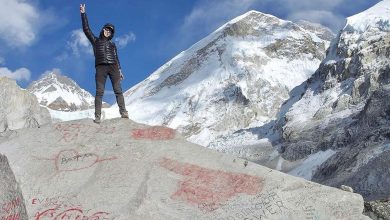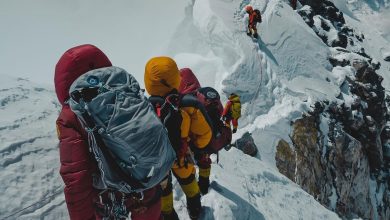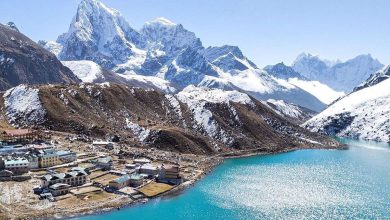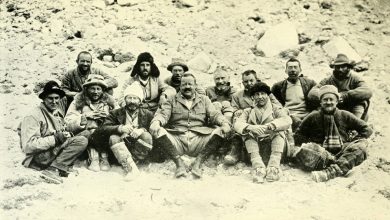Things To Do In Nepal: From Peaks to Temples
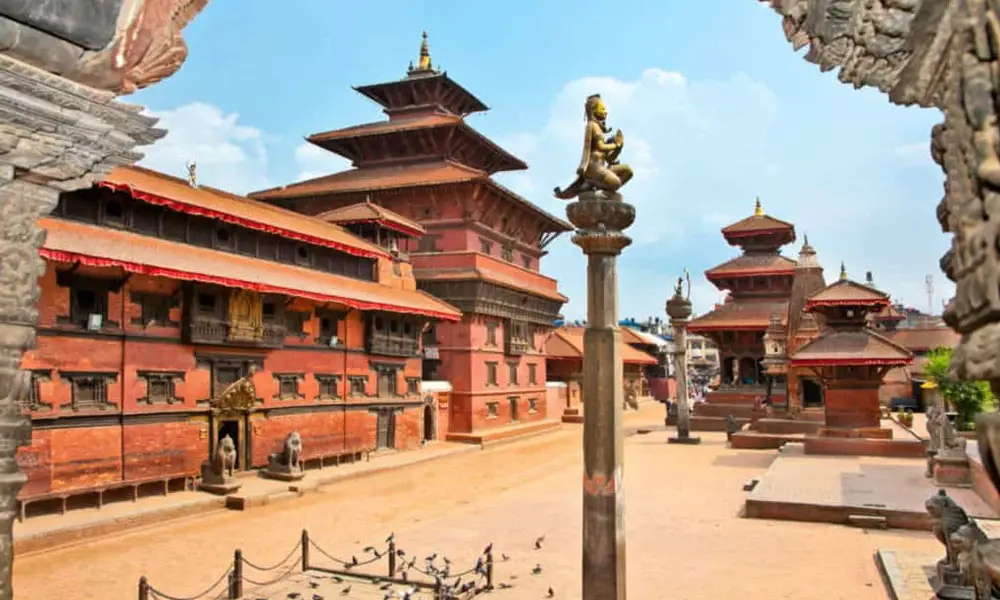
Nepal, a tourist haven, is between the fascinating Indian jungles and majestic Himalayas ranges. It’s the same place where things like peaks, rich culture, traditions, yaks, yetis, and Tibetan influences monasteries seem to be common.
Since Nepal opened its borders to travelers, most destinations have become famous tourist destinations luring travelers of all types. With this in mind, the most popular destination that almost every visit prefers to visit in Nepal is – Everest Base Camp. Its rugged trails with many natural and cultural wonders to experience prove to provide an unparallel opportunity. Similarly, the appeal of the world’s tallest peak, Everest, is enough to lure climbers worldwide.
Over the years, Nepal, with its beautiful, remote, and untouched trekking and touring areas, has raised itself on the list of popular travel destinations worldwide. The country is characterized by its historical attractions, vast cultural heritage dating centuries back, and rich natural beauty. This combination is perfect for travelers wanting to experience modern, ancient, slow-paced lifestyles and frantic city life. No wonder why Nepal has often been featured high on the world’s travel trends list and beyond.
In addition to exploring these enticing tourist attractions in Nepal, there are many other things to do in Nepal that temps travelers around the year. From trekking, touring, and participating in jungle activities to sightseeing, there are many things to do in Nepal, creating the needs of trekkers of all groups.
With abundant choices, determining the best place to begin within Nepal can often be challenging. Whether you are a first-timer or a frequent visitor to Nepal, there is always more to see for every traveler. So here is our guide for the best things to do in Nepal below.
1. Long Trek through the Himalayas
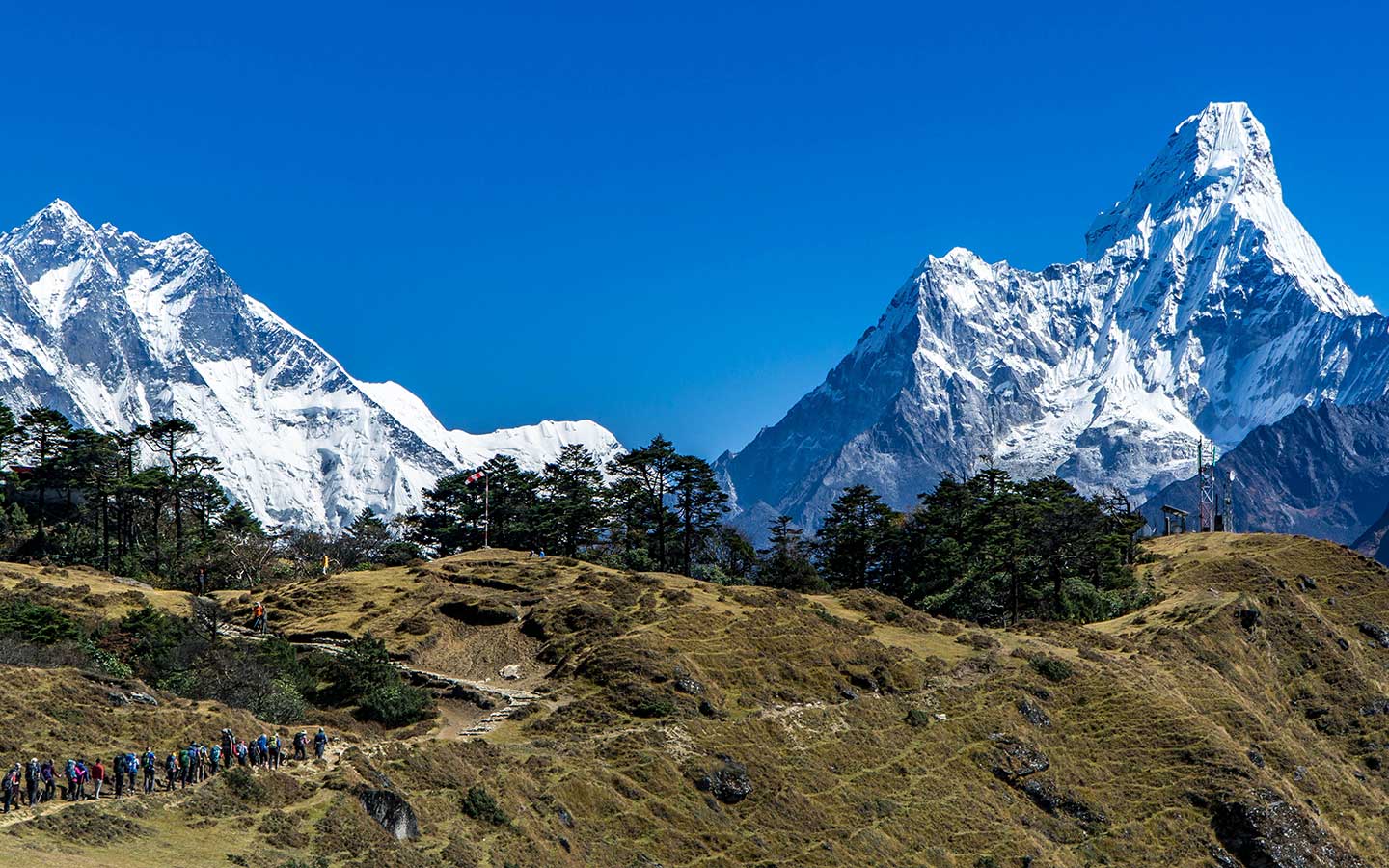
Let’s start with the obvious thing visitors should not miss during their visit to Nepal- Long Trek through the Himalayas. If you are traveling to Nepal, you definitely do not want to miss going on a long hike or even plan your whole trek around the Region, whether it be Everest or Annapurna. From the majestic summits of the Himalayas to the gentler paths at lower altitudes, there’s a wide selection of hikes with varying lengths and levels of challenge. Here we are sharing some of the long treks region-wise that are pretty famous and undiscovered by tourists.
Everest Region
The trailhead of the Everest region (home to the tallest peak in the world) is accessible by trekking from Jiri or Phaplu and a 45-minute flight to Lukla. This Region is the most developed and famous tourist destination with a wide selection of accommodations ranging from basic to luxury and trodden stone-cut trails. Similarly, the Region also has a great selection of long treks.
Everest Base Camp Trek (12- 14 days)
This classic Everest Base Camp trek lasts about 12-14 days and takes you to the base of Everest and back. The base camp is the ground zero for all the south-everest expeditions. This trek takes you to Sherpa villages like Phakding, Namche Bazaar, Tengboche, and Dingboche. The trek highlights are visiting Namche Bazaar, Everest base camp, and Kala Patthar for sunset views of Everest, Nuptse, Lhotse, etc.
Gokyo Lakes Trek (12- 14 Days)
Gokyo Lake Trek is a great alternative and popular yet crowded trek to Everest Base Camp Trek. This trek takes the same route as the EBC trek up to Namche Bazaar and then splits from here, taking you to Dole and Machhermo. You finally reach the valley, primarily famous for the picturesque lakes of Gokyo and its vantage point, Gokyo Ri (17,575 ft / 5,357 m).
Everest Three Passes Trek (19- 22 Days)
For those travelers who want to explore the Region more, the Everest three-pass trek is the trek for them. These routes take you to the three passes of the Region Cho La (17,782 ft / 5,420 m), Kongma La (18,209 ft / 5,550 m), and Renjo La (17,560 ft / 5,360 m). Similarly, it encompasses all the highlights of the Region in just a single trek.
Annapurna Region-
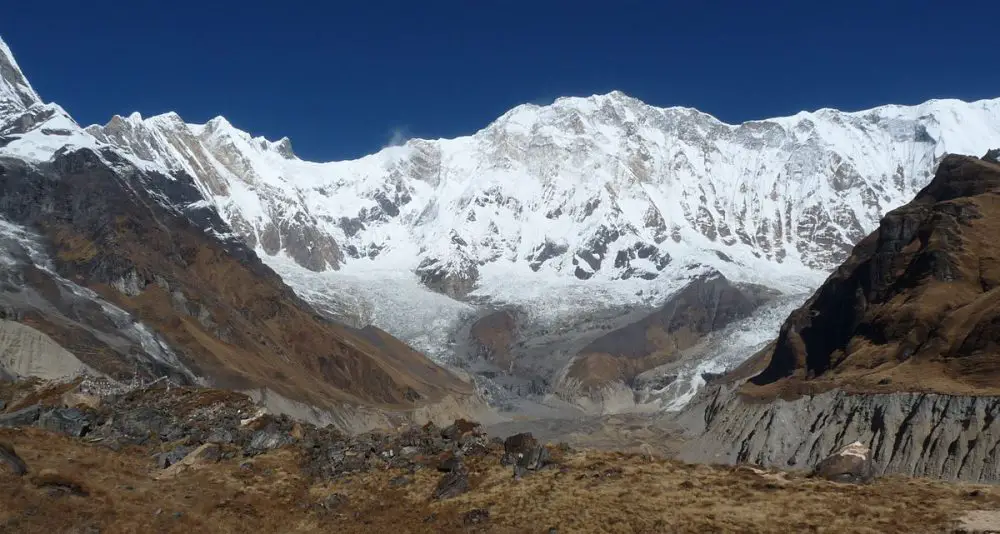
A tremendous white wall surrounds the Pokhara Valley’s northern horizon. This white wall is the beautiful Annapurna range, which tops with Annapurna I (8,091m). This Region boasts various Annapurna trekking routes ranging from a simple hike to the legendary hidden valleys to the nepal-tibet border.
Annapurna Base Camp Trek (12 Days)
Annapurna Base Camp is another best classic trek after Everest Base Camp. Its there-and-back route takes the trekkers to the valley famous for the amphitheater of the Annapurnas. Rich vegetation and an altitude gain of the ABC Trail represent the perfect example of beauty and serenity. On top of that, you will pass through many villages like Chomrong, Ghorepani, Dovan, Tadapani, and more that further enhance the beauty of this trek.
Nar Phu Valley Trek– (9 Days)
Nar Phu Valley is a lesser-known and remote trek of the Anapurna region. The valley lies in the restricted area of the Region within the folds of the Annapurna mountains. Tibetan Buddhists mainly inhabit the valley. Thus it’s famous for its unique Tibetan Buddhist culture, tradition, and practices that are somewhat similar to the culture of Upper Mustang.
Mardi Himal Trek (9 Days)
The Mardi Himal trek is another excellent trek of the Annapurna region. The trek takes you to the small mountain beneath the majestic Machhapuchre peak. Likewise, the trek promises an astonishing panorama of the beautiful Annapurna massif and a unique trekking experience. The trek quickly gained popularity all thanks to its off-beaten paths and up-close view of peaks rising over 8,000m.
Annapurna Circuit Trek (16 Days)
Annapurna circuit trek is one of the world’s classic treks. The trek takes you near the Annapurna range and its landscapes, from the sub-tropical valleys to Alpine meadows. The trek’s highest point is Thorung La Pass (5,416m), a snow-covered pass with utterly spectacular mountain views of the region. After crossing the pass, you hike towards the Muktinath Temple (a temple revered by Hindus and buddies).
Mustang Region
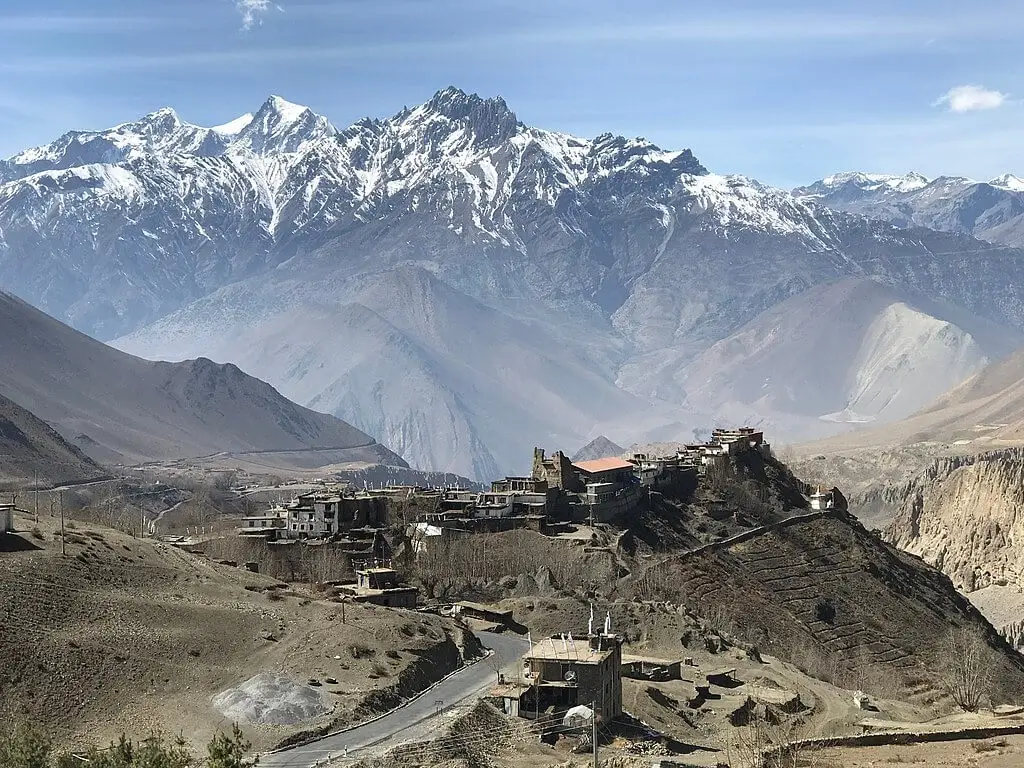
Upper Mustang is an isolated and beautiful region close to the Tibetan border. Its dry, unique, and high-altitude landscapes characterize the area.
Lower Mustang Trek (9 Days)
Lower Mustang Trek is an excellent option for trekkers who are short on time and have a Limited budget. The region lies just outside the restricted area, which resembles similar landscapes to the upper Mustang. The trek is suitable for all treks and can be completed during the monsoon season.
Upper Mustang Trek (12-14 Days)
The trek takes you to the capital of the region Lo Manthang. You will visit one side of the Mustang region and return from the alternative route of the other side of the region. This trek provides a unique experience, as very few visit this area.
2. Take Short & Easy Treks in Nepal
You do not need to embark on long treks to experience the beauty of the Himalayas. In fact, you can take a short trip to different regions lasting up to 7 days or less. Also known as the beginner’s trek, it offers beautiful views and glimpses of the local culture and tradition. Here we provide you with some beautiful short treks in Nepal.
Everest Region-
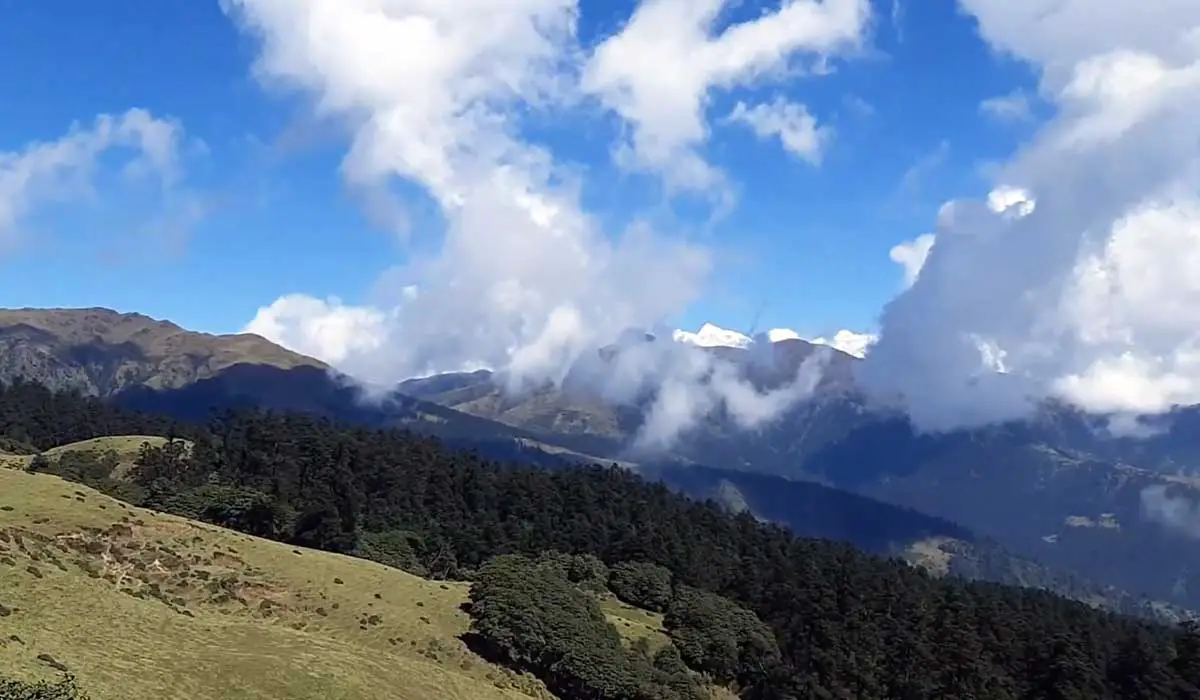
Pikey Peak Trek (6- 7 Days)
This moderate trek takes you to the South of Lukla in the Everst’s lower region. The final destination is the ridgeline to Pikey Peak, famous for the clearest view of Mt Everest. It is also the favorite place of the Sir Edmund Hillary.
Solu Trek (6 Days)
This trek takes you to the lower parts of the Everest region. The trek takes place at a relatively low elevation, allowing you to visit Monatrie and learn about the sharp culture.
Annapurna Region
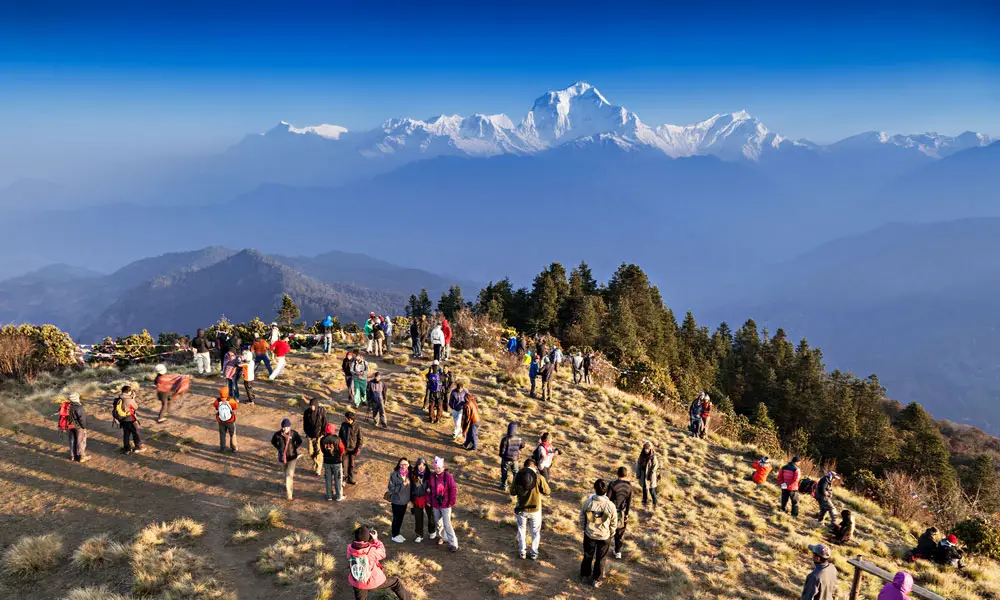
Ghorepani Poon Hill Trek (5 Days)
Ghorepani Poon Hill Trek is one of Nepal’s most famous short treks. Per the five days, this trek takes you to the iconic viewpoint at Poon Hill, Ghorepani, and Ghandruk villages (villages inhabited by Gurungs).
Khopra Danda Trek (5-7 Days)
Khopra Danda trek is an extended loop trek that also includes visiting Poon Hill en route. This trek takes you to the higher viewpoint and ridgeline for an overall view of the lower Annapurna region.
Langtang Region-
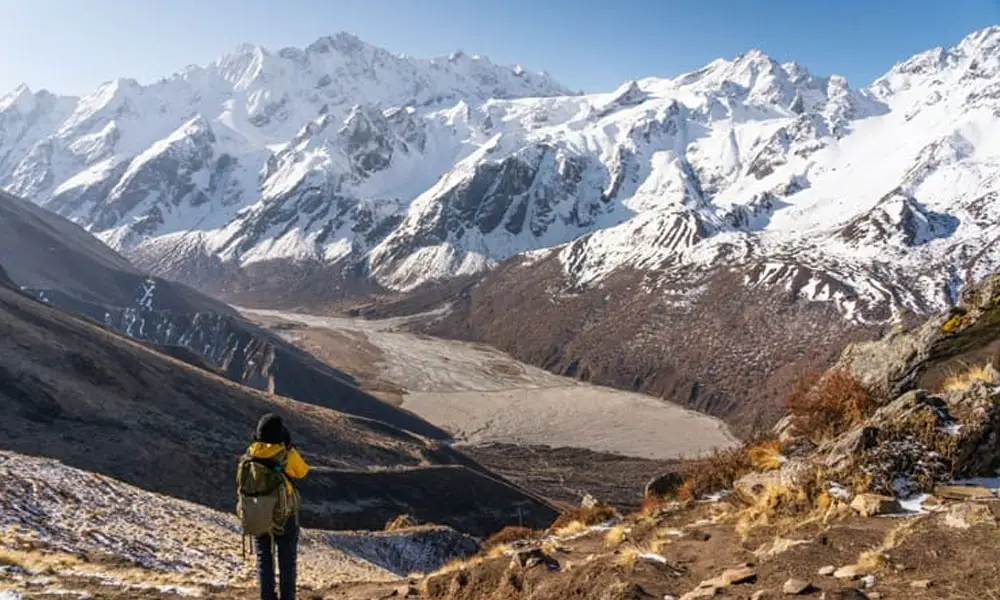
Langtang Valley Trek (6-7 days)
The Langtang Valley trek takes you to the remote area of the Langtang region. This trek is an easy ad short trek of Nepal where the highest point you will reach is Tserko Ri (4,984m). It’s a vantage point for the majestic snow-capped mountains like Dorje Lakpa, Langtang Lirung, and Langtang Ri.
Tamang Heritage Trail (7 Days)
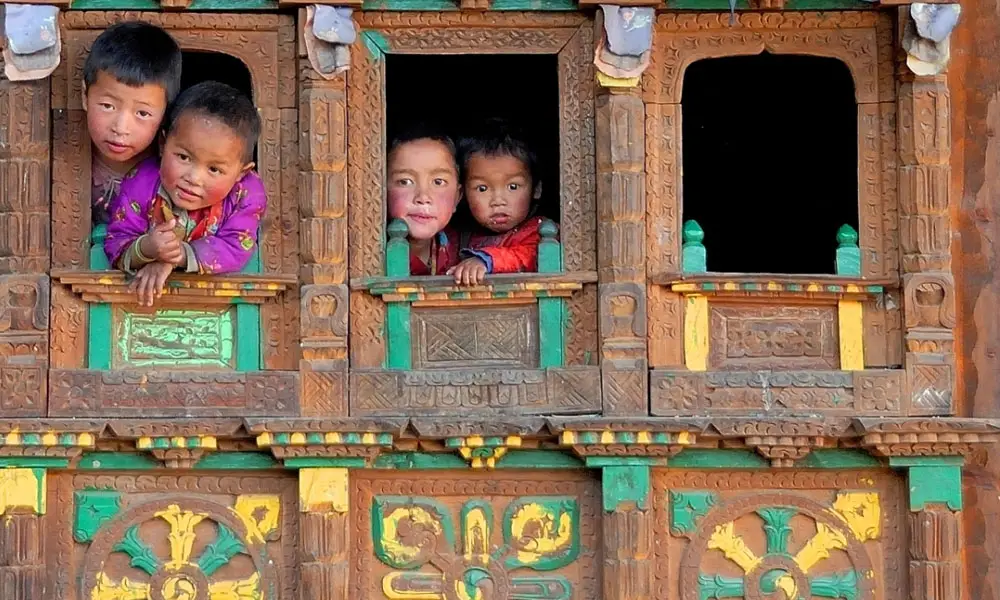
The name of the trek derives from the community that calls this region home. Thus, travelers can enter and explore Tamang traditions and cultures throughout the trail.
3. Experience the Culture and Spirituality in Kathmandu
If you want to experience Nepal’s cultural and spiritual side, Visiting the sacred temple of Pashupatinath in Kathmandu is a great starting point. The temple, mainly dedicated to the lord Shiva, is an excellent holiest site in Hinduism. Therefore the temple is visited by hundreds and thousands of devotees each year.
4. Go on a Jungle Safari in Chitwan National Park
Chitwan Jungle Safari takes you to the protected area of the Chitwan national park- a UNESCO heritage site. The area was established in 1973 AD and shelters wildlife like Spotted Leopard, one-horned rhinoceros, Royal Bengal Tiger, Blue bull, Gharial Crocodiles, other animals, and more than 650 bird species. The jungle tour is arranged in the wild wonders of wildlife; Jungle Safari in Chitwan National Park offers its visitors to immerse in the jungle’s fantastic atmosphere. Moreover, the jungle safari in Chitwan also provides various other enjoyable activities like Jungle Walks, Jeep Safari, Elephant Back Safari, Elephant Bathing, and many more.
5. Take a Scenic Flight Over Mount Everest

Nepal’s visit is incomplete without witnessing the greatness of Mt Everest (the tallest mountain). Therefore, For once-in-a-lifetime views and experiences, board an early morning scenic flight to Everest. This flight lasts about 1 hour and takes off from Kathmandu’s domestic airport in favorable weather. Buddha Air and Tara Air mainly operate this scenic flight over Everest.
Tip- Book a seat at the front or rear of the plane for a better view.
Alternatively, you can take a short helicopter flight from Kathmandu to Everest Base Camp. The helicopter tour to Everest may be expensive, but it provides an areal view of the region.
Moreover, if you are heading towards Everest by foot and do not want to board 45 minutes flight to Lukla, you can take a helicopter to and back from Lukla. This option allows you to fly lower in the valley and get up personally and close to the majestic peaks of the region.
6. Visit the Ancient Bhaktapur City
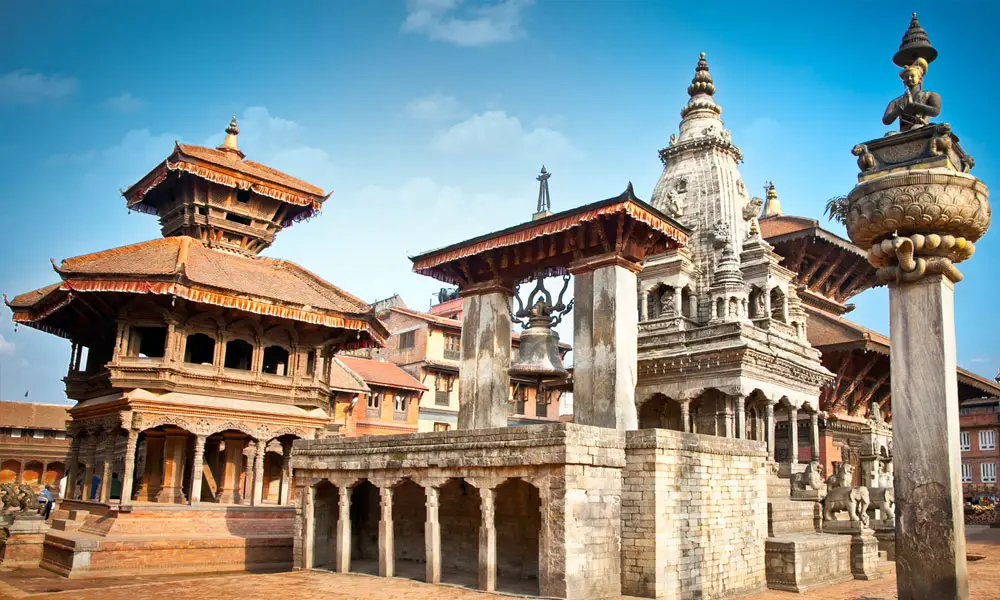
Bhaktapur City is the central hub of celebrating festivals. Many religious festivals and Jatras like Holi, Sa Paaru (Gai Jatra), Bisket Jatra, and Indra Jatra are held inside the city. In addition, the ancient city also boasts a world heritage site, i.e., Bhaktapur Durbar Square, Changunarayan temple famous for its exquisite pagodas, sacred temples, and ancient architecture. Bhaktapur’s fantastic view of the Himalayas, well-preserved pagodas, temples, and places make the city one of Nepal’s top places to visit.
7. Paragliding, Relax and Reflect in Pokhara
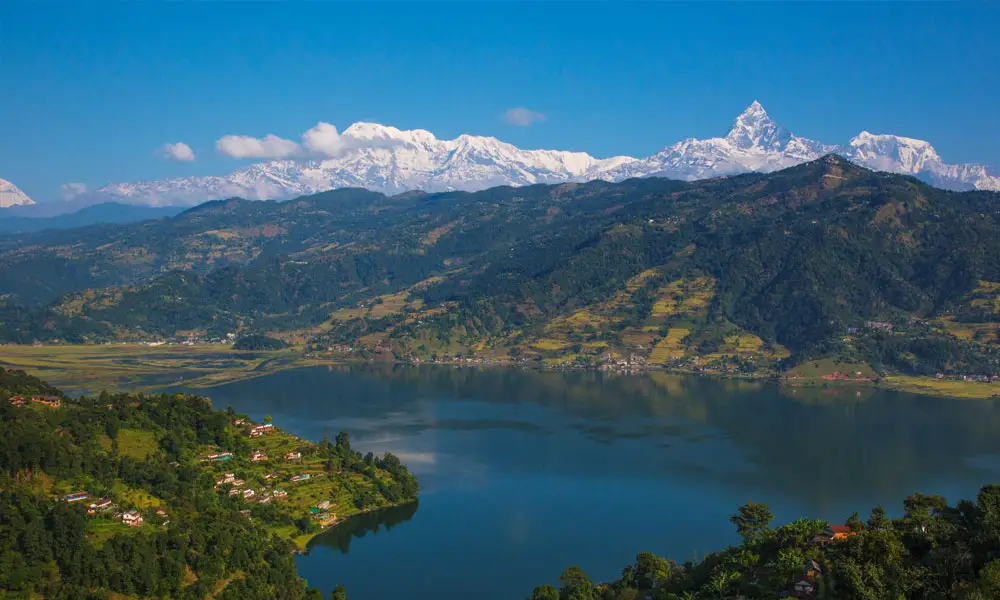
Pokhara Valley, 126 miles / 204 km apart from Kathmandu, is a city of mountains, lakes, and caves. The Annapurna ranges, and other mountain ranges surround the valley. This valley is also known as the gateway of the Anapurna region treks like Ghandruk, Ghorepani, and EBC trek.
Besides its natural wonders, Pokhara is famous for an adventurous and thrilling sport– Paragliding. Some people who prefer more extreme adventure have done Paragliding from the high elevated hills and mountains. But if this extreme sport from hills and mountains is too risky, you may choose to paraglide from Sarangkot. Paragliding from Sarangkot takes you toward the Annapurna mountain range and over the beautiful Pokhara valley. Moreover, it’s a great way to experience the beauty of the Pokhara and the Himalayas.
Generally, two options are available for paragliding- to take a free-flying foot-launched aircraft or a non-motorized foot-launched inflatable wind glider. For the anxious one, in both options, you will always have a trained pilot beside you to assist you.
If you want a solo paragliding experience without a pilot tne, you can take a 10-day course and do it alone.
Some other things to do in Pokhara are-
- Go rafting on the Kali Gandaki and Seti rivers
- Visit the International Mountain Museum
- Visit the Peace Temple
- Walk through the Bat Cave
- Pay a Visit to Shree Gaden Dhargay Ling Monastery
- Go boating on Phewa and Begnas Lakes
- Explore the Gurkha Memorial Museum
- Explore Annapurna Butterfly Museum
- Check out Devi’s Fall
8. Go White Water Rafting in Nepal’s Rivers
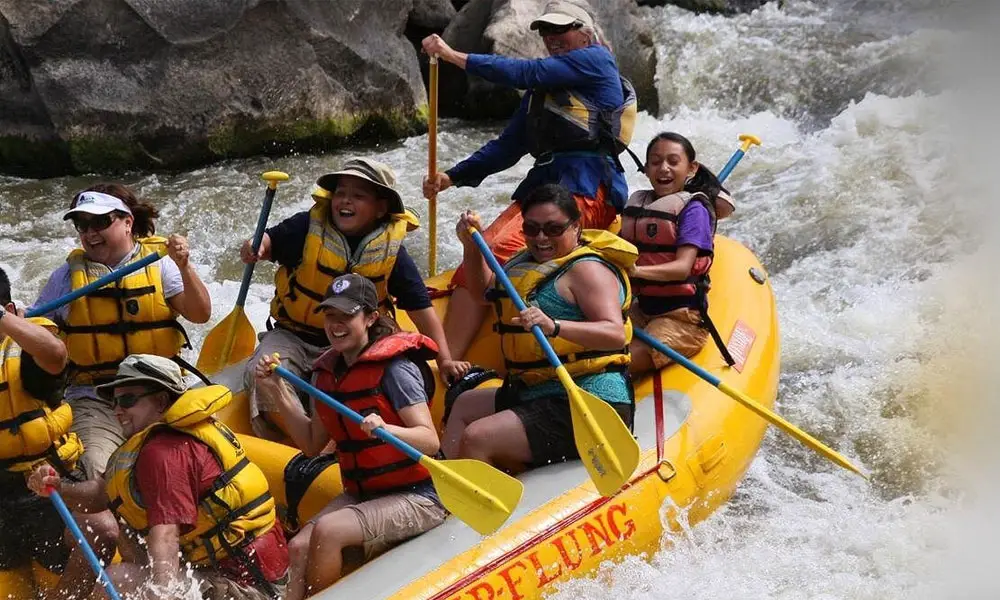
Besides its trekking destinations, Nepal also brags beautiful ever-flowing rivers suitable for adventurous sports like white water rafting (and kayaking). Plenty of options for white water rafting are available for novices and pros alike. But for an economical introduction, travelers can take a one or two-day trip along the closest river of Kathmandu, i.e., Trisuli River.
If you want a more thrilling and challenging introduction, test yourself with the white water rafting in Bhote Kosi. Nepal’s steepest rafting river is the Bhote Kosi River flowing down from the Tibetan border. Alternatively, you can take a week-long trip through the Sun Kosi or Tamur Rivers wilderness.
9. Go mountain biking
Nepal has an expansive network of back roads, tracks, and trails, some of which have been used for centuries by the locals. These extensive networks in all three Nepali terrains, i.e., mountains, Flatlands, and hills, provide a thr; ing acres for mountain bikers. Even if you choose a bicycle or motorcycle ride, you will find multiple beautiful routes that get you across Nepal.
10. Experience Newari cuisine in Kathmandu
Per its status as an epicenter for backpackers in Asia, Kathmandu, Nepal’s capital city, has an exceptional variety of cafes, bakeries, restaurants, and street food vendors. All these places serve the best foods from across the globe, including typical Nepali foods like Momos (stuffed steamed or fried dumplings) and Daal bhaat tarkari (Lentil, rice, and vegetable curry).
Besides all these, the most famous cuisine of Kathmandu is Newari cuisine. Although most locals are vegetarian, meat items like buffalo, boar, chicken, and goat strongly feature in many Newari dishes. The most favored Newari Cusines are Choila (spicy grilled buffalo strips) and aji (beaten rice)
11. Watch the sunrise in Nagarkot, Dhulikhel
Many villages and towns surround Nepal’s capital city Kathmandu. These settlements at different elevations provide sublime views of the Himalayas ranges, particularly at sunrise. Daman, Nagarkot, and Dhulikhel are some of the best places, just an hour or two away from Kathmandu.
All three places, Daman, Nagarkot, and Dhulikhe, boast basic to luxurious guest houses that allow visitors to gaze over the world’s highest mountains from their balconies or the comfort of their rooms.
12. Visit the birthplace of the Buddha- Lumbini
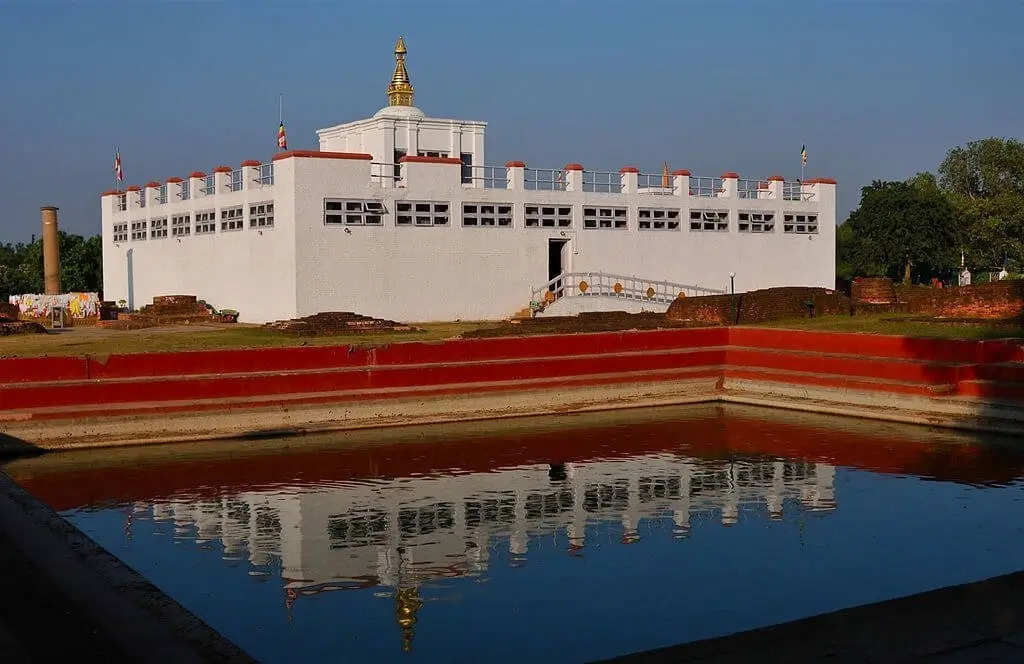
Siddhartha Gautama, who later became the founder of Lord Buddha, was born in In 563 BCE in Lumbini. Lumbini lies in the western Terai, and the place where Buddha was born is now known as the Maya Devi Temple. The temple’s name was given after lord Buddha’s mother and is believed to date back around 2200 years.
Lumbini is a mecca for Buddhist followers. Therefore devotees from all over the world, mainly from Asian countries with the influence of Buddhism, like China, Thailand, Cambodia, etc., visit this place. Similarly, the temple consists of other beautiful temples resembling Buddhist culture, tradition, and practices. The central station of the temple is its small other temples, museums, cultural center, and gleaming peaceful pagoda.
13. Learn about Tibetan Buddhism in Boudhanath and Swoyambhunath
Kathmandu Valley boasts various stupas like Boudhanath and Swayambhunath, also listed as UNESCO World Heritage sites.
Boudhanath, also called Bouda, is home to the Tibetan Buddhist exiles community. Its main attractions are its whitewashed stupa, built in 600 CE. Both Hinduism and Buddhism revered this stupa, and attracts thousands of pilgrims from all over the world. The surroundings of the stupa are filled with students and Monks in maroon robes, colorful prayer flags, devotees, and stores selling butter lamps.
Another Stupa with great religious importance is Swayambhunath lying on a high hilltop in Kathmandu’s west. It’s a dome-shaped monument with big two-painted eyes of the lord Buddha. Similarly, the place is known as Monkey Temple and is surrounded by many other small temples, sculptures, shrines, and rest houses.
14. Visit Bardia National Park
Bardia National Park is another excellent protected area in Terai. The park boas various rare and beautiful wildlife and is said to resemble the ambiance of what the Chitwan was about 30 years back. The park stretches about 968 sq. km and is rich in vegetation, including grasslands and Sal forests.
The park is also renowned as one of Asia’s most expansive domains providing refuge for majestic tigers. Apart from the tigers, travelers can also spot 30 different species of mammals like Gangetic dolphins, one-horned rhinos, Elephants, crocodiles, and 250 species of birds like Bengal floricans, cranes, etc.
15. Join Festival Celebration
With a calendar packed with many festivals, every day in Nepal almost feels like a holiday and festive time. Lasting for nearly 15 days, Dashain and Tihar are the biggest festivals in Nepal. It offers insight into Nepal’s cultures and traditions by marking important Hindu and animist rituals.
Another great festival celebrates here is Indra Jatra. The festival is celebrated for almost 8 days in September. During the festive times, you can expect a treasure trove of colorfully dressed dancers, all moving on the beats of Nepalese instruments in Jatras on the Kathmandu streets. Meantime, another biggest festival, Bisket Jatra, fills the air of Bhaktapur city with mouth-watering aromas.
16. Take a Cooking Class and/or Food Tour
Kathmandu Valley, the resounding capital city of Nepal, is a melting point of flavors and aromas. Taking a cooking class in Kathmandu for about a day or two is a must-do activity for food lovers. This activity offers the unique and rare opportunity to deliver diverse and rich Nepali cuisine that resembles the country’s culture and tradition. As you participate in the cooking class, you can make a range of cuisines from traditional dal bhat and momos to more exotic dishes like Nepali juicy barbecued meats.
Besides taking a cooking class, you can also take a short food tour around the valley. This food tour lets you immerse into the rich culture and Nepali cuisine at the different places of the valley.
17. Go on an Everest Expedition
If you are a mountaineer and summiting the world’s tallest peak, Everest, has been your long-time dream, then you should definitely take the Everest Climbing expedition in Nepal. This Everest climbing expedition first takes you via the various Sherpa settlements and then to the Everest base camp at (5,356 meters).
Before your expedition, you should make a great team of Mountaineers and start your Everest expedition planning which includes choosing the best routes to the summit, getting trained physically and mentally, etc. In addition, you should also have to acclimatize to different places and climb uphill and downhill for a few days before you finally reach the Kala Patthar (5,545m). Kala Patthar is the vantage point for famous peaks like Mt Everest, Nuptse, Lhotse, etc. To reach the summit, you will have to pass through many major hurls, like the Khumbu icefall (5,486 m), four base camps, the South Col (7,906m), and finally, the Hillary Step (8,760m).
18. Hunt in the Dhorpatan Hunting Reserve
Hunting is generally illegal in most parts of Nepal besides Dhorpatan Hunting Reserve. To go for a hunting experience, interested travelers first must obtain permission from the Wildlife Conservation Department by paying around $500. Obtaining permits for hunting might be expensive here due to the difficult access to the Dhorpatan Hunting Reserve.
Dhorpatan Hunting Reserve has almost 32 wildlife species like red panda, wild boar, stag, snow leopard, etc. Among these, you can only hunt blue sheep and wild boar.
19. Go Rock Climbing and Peak Climbing
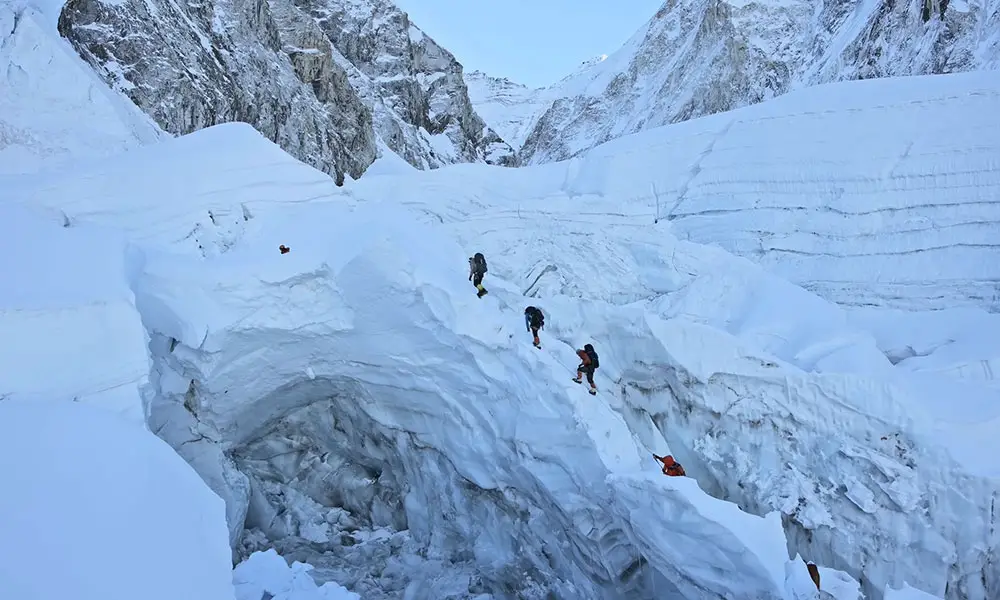
If you are into adventure sports, rock and peak climbing are for you.
Nepal has many places for rock climbing, including artificial walls and natural hills. For an artificial rock climbing experience, you can book your place in Chabahil, Kathmandu, which Pasang Lamhu Foundation runs.
A total of 18 peaks are opened for alpine climbing in Nepal. For peak climbing, you must first obtain permission by paying certain charges from the Nepal Mountaineering Association. Some minor peaks open for peak climbing are Chulu East (6,584 m), Yala Peak (5,732 m), Mera Peak (6,654 m), etc.
20. Try Bungee Jumping
Jumping off the bridge above the flowing river with an elastic cord tied around your legs may sound like an insane thing to do for some. But the same thrilling activity sounds like an adventure and an adrenaline rush for other travelers. If you are brave enough to try out this bungee jumping, there are a few places In Nepal where you can give it a go. And the places are- The Bhote Koshi Gorge, Hemja- Pokhara, The Last Resort, and Kushma.
You may also like:
